A post this month a little away from the Paleochora area. In fact, not on Crete at all.
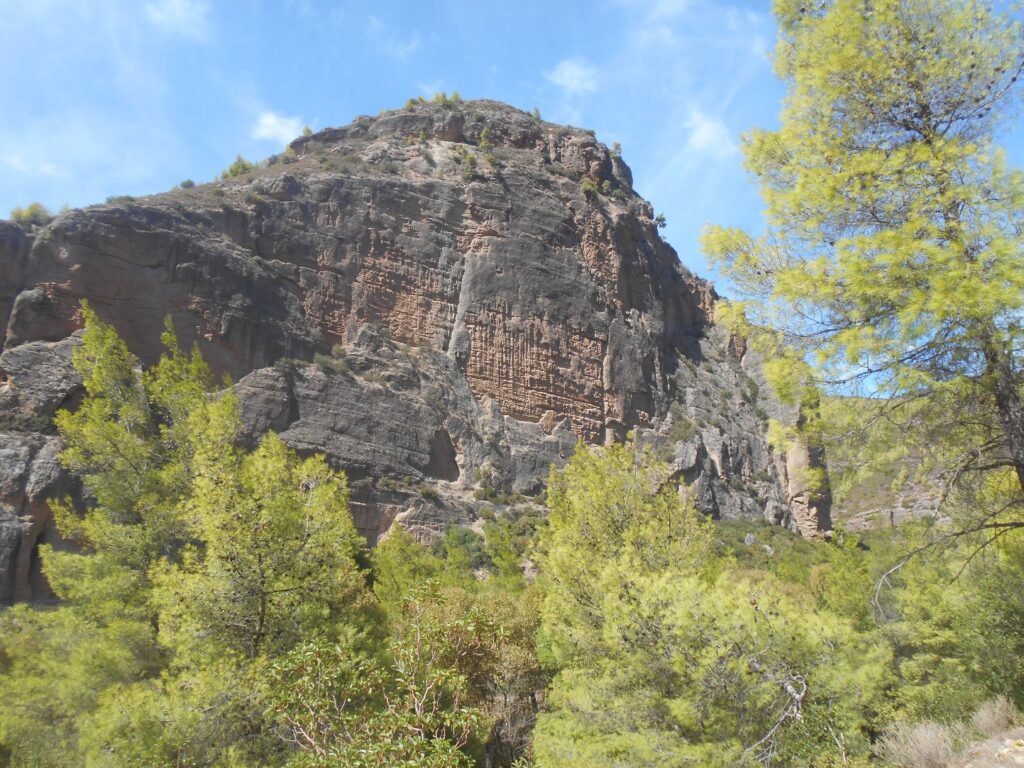
The small Greek town of Kalavryta is situated in the Northern Peloponnese, 762m above sea level and c. 20km inland from the coast, but twice that distance if you drive up the twisting and narrow road after leaving the Corinth/Patras highway at Diakopto. En route from Athens to spend time exploring in the Peloponnese, including the recently opened Menelon Trail, we broke the journey to spend two nights in Kalavryta.
Our intention was to spend a day walking through the Vouraikos Gorge below the small town, and also visit the site and Memorial of the infamous Kalavryta Massacre, by far the worst of many atrocities carried out during the Nazi occupation of Greece.
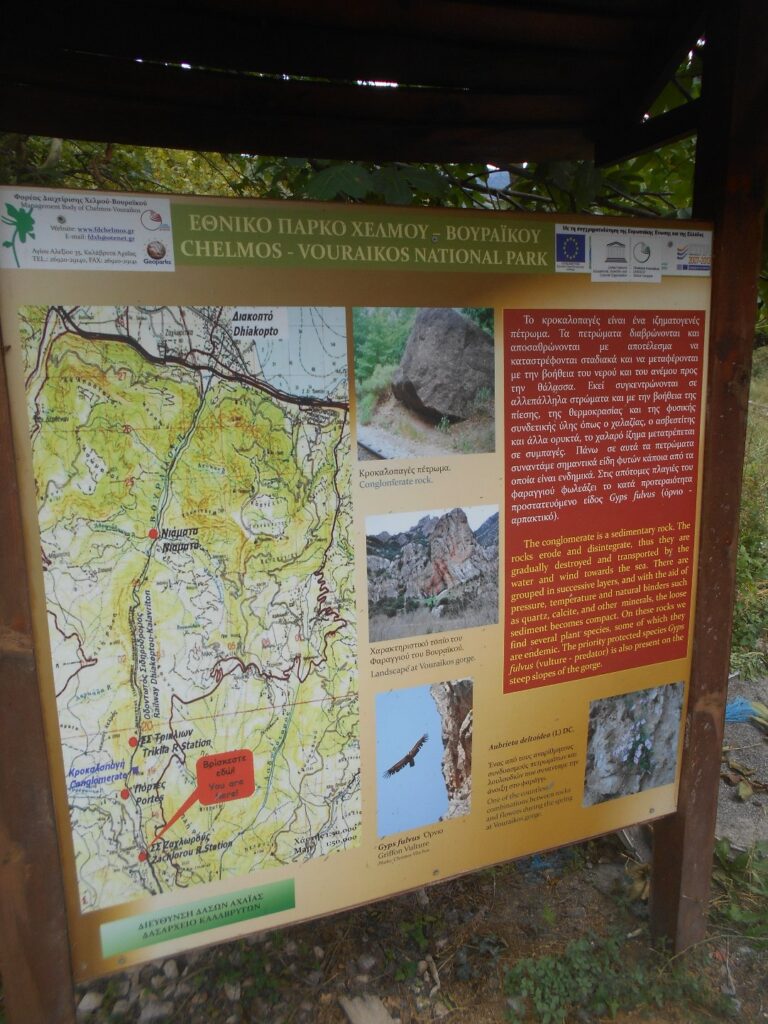
In December 1943 the Germans began ‘Operation Kalavryta’, intended to eliminate Greek partisans and guerrilla fighters from this then remote and mountainous region. The previous October the latter had captured and later killed 81 enemy soldiers. In savage retribution, on the 13th December troops from the Wehrmacht 117th Jager Division surrounded the town, took all the male population, and separated those under 14 years. The rest were taken to a field on Kapi Hill and shot ; 438 men and young boys were massacred, only thirteen survived.
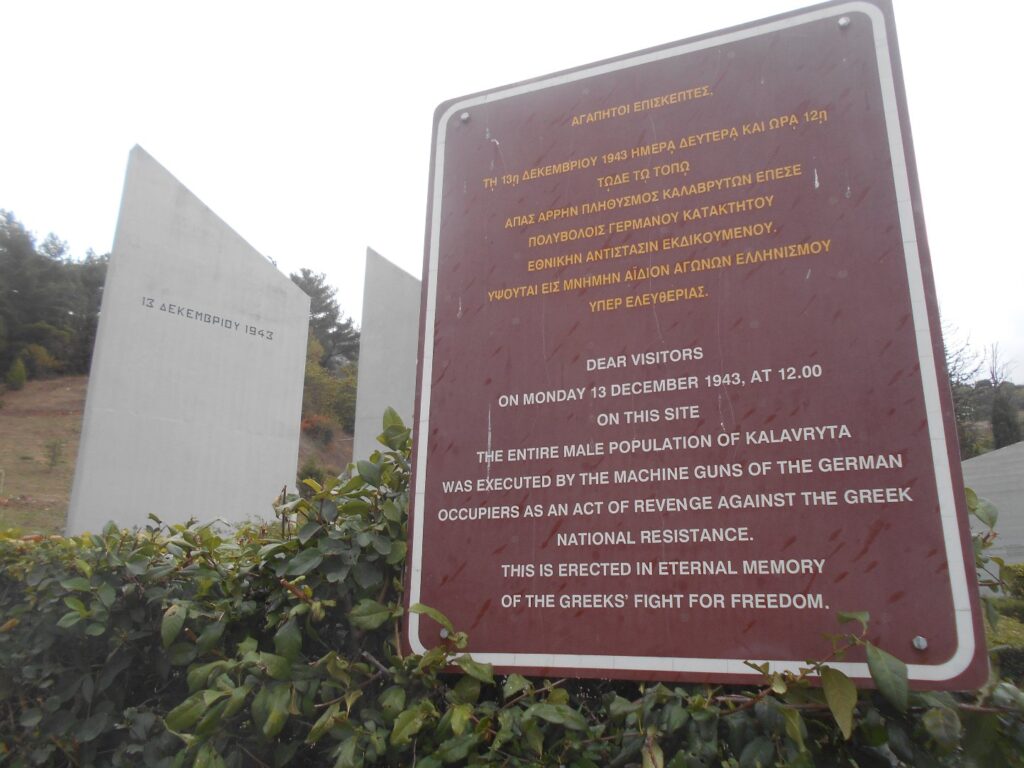
Around 1300 women and girls were locked inside the Primary School (now the Holocaust Museum), and the building set on fire. A door (possibly opened by an Austrian soldier) enabled them to escape, but next day the town was destroyed, and 2000 livestock taken.
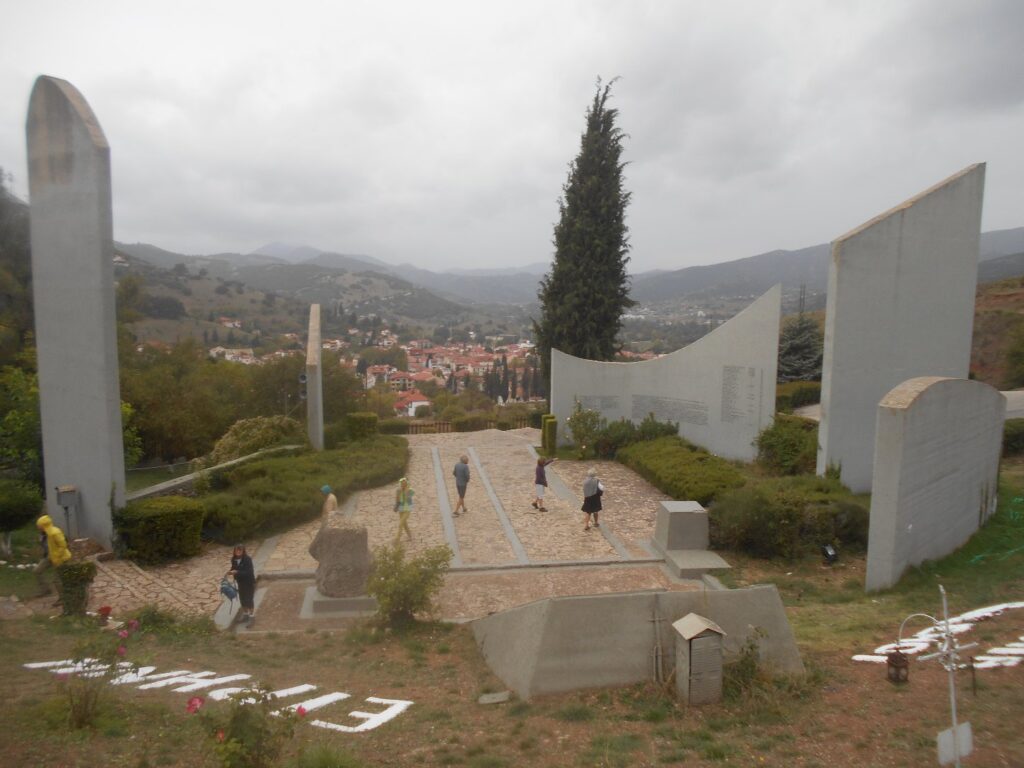
We visited the Memorial Site under lowering clouds and light rain. Graves are scattered across the slopes above the monument, which records the names, and poignantly the ages, young and old, of all who died here. In the town below, in the early morning, nothing stirred, with the cathedral clock permanently stopped at 2.34pm, the time the massacre began.
In 2021 a film was made and released – “Echoes of the Past”, or ‘Kalavryta 1943’, which must be distressing and harrowing viewing. In total, 696 civilians were killed during ‘Operation Kalavryta’, including monks from nearby monasteries, which were also destroyed. No reparation has ever been made here, or indeed in Kantanos, for the destruction and loss of life. Lest we forget …
Until the late 1880s, with no road access, travel around the Kalavryta region was by mountain trails, and to the coast by paths above and through the precipices and ravines of the Vouraikos river. Then in 1885 work began on the construction of a railway from Diakopto to Kalavryta, an ambitious project estimated to take ten months.
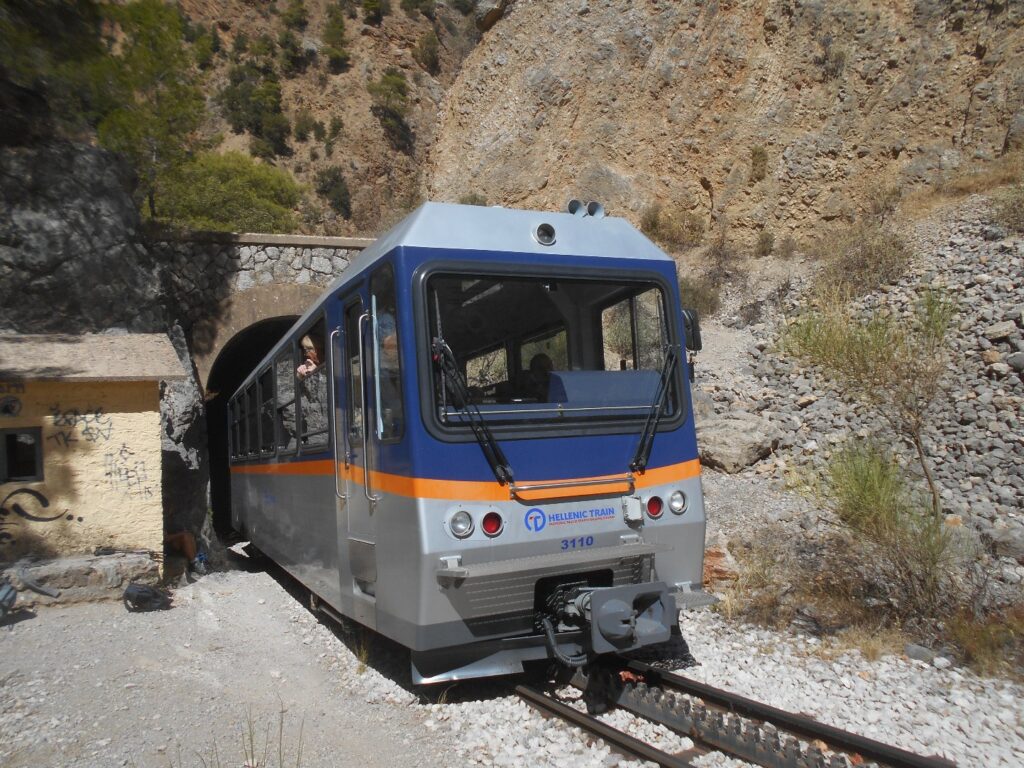
Built by a French company, and using Italian craftsmen with similar experience in the Alps, the single line “rack” railway, climbing from sea level to 720m, requiring numerous tunnels, cuttings and bridges, took far longer than planned, and was opened on March 10th 1896. By coincidence, the similarly built Snowdon Mountain Railway in the U.K. opened to the public just a month later on April 6th 1896. Initially steam locomotives operated the line, now, from 2009 with Swiss diesel-electric trains.
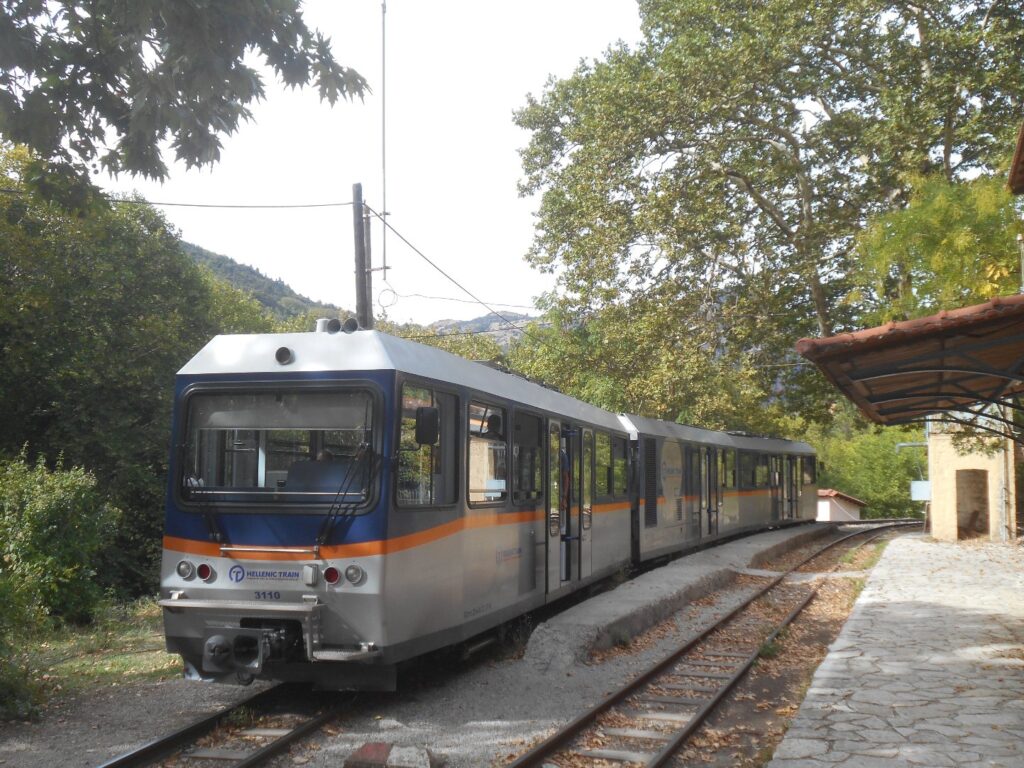
The walk from Kalavryta to Diakopto is 22km, mainly either on or alongside the rail track, but the most scenic part is the 7.5 km between the stations of Zachlorou and Niamata. So our plan was to drive a short distance to the former, walk through the gorge to the latter, and take the train back. It’s mostly flat walking, with three steeper sections of 17.5% incline where the “rack and pinion” system is used. But the sleepers are just short of a stride apart, sides of the track are gravel and stones, so it’s not always easy.
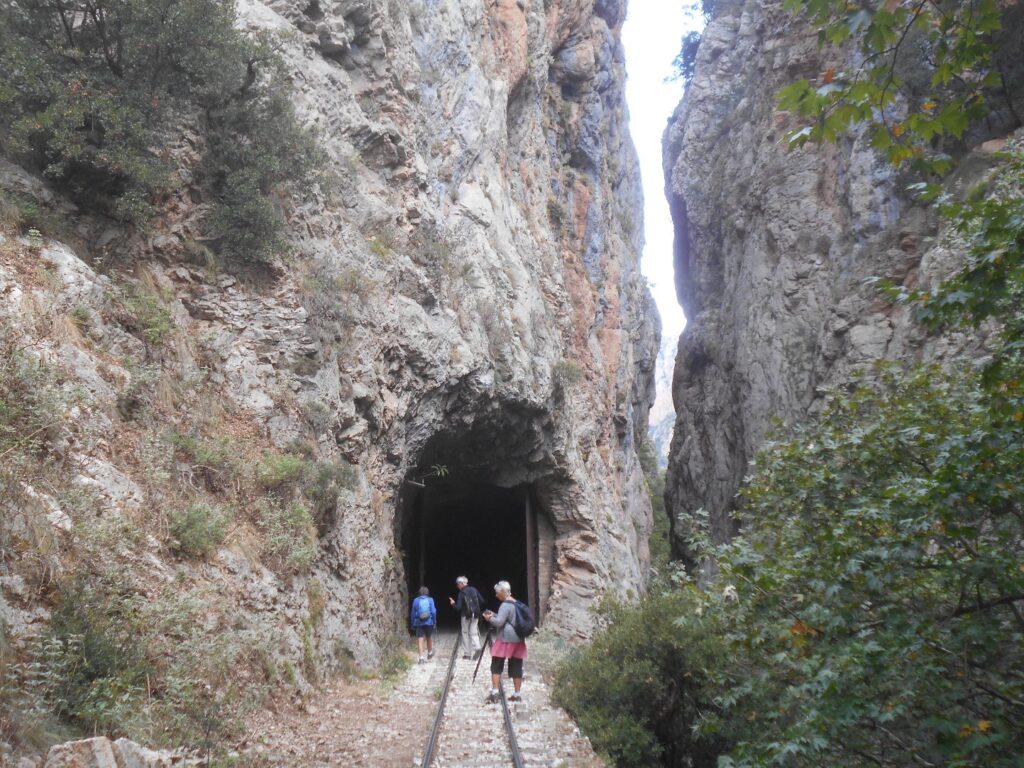
Part of the Chelmos-Vouraikos National Park, this is also on the E4 long-distance path, which we know well locally. And the scenery is stunning, especially when we reached ‘Portes’ (Gates), where the narrow river is crossed by a bridge high above the torrent below (the train takes a different route here.)
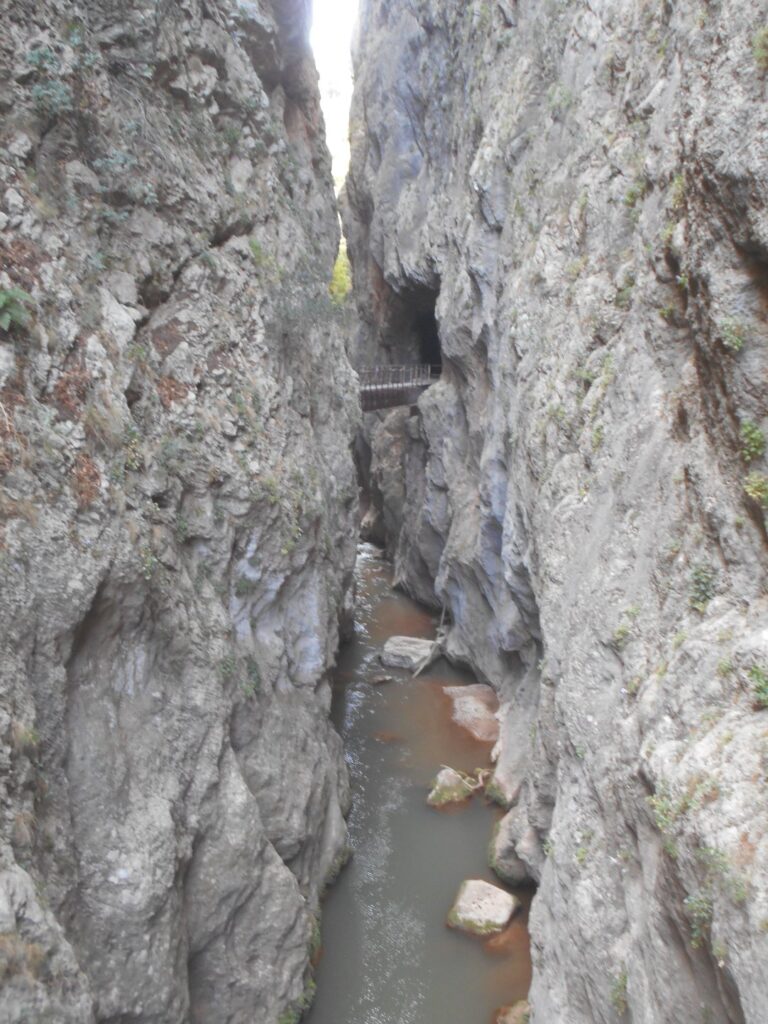
More bridges followed, safe but precarious looking, with signs warning ‘No Pedestrians’, all ignored, as this is a popular trail. And many tunnels ; knowing the timetable, and with no passing space, we waited twice for a train to pass by before entering longer ones.
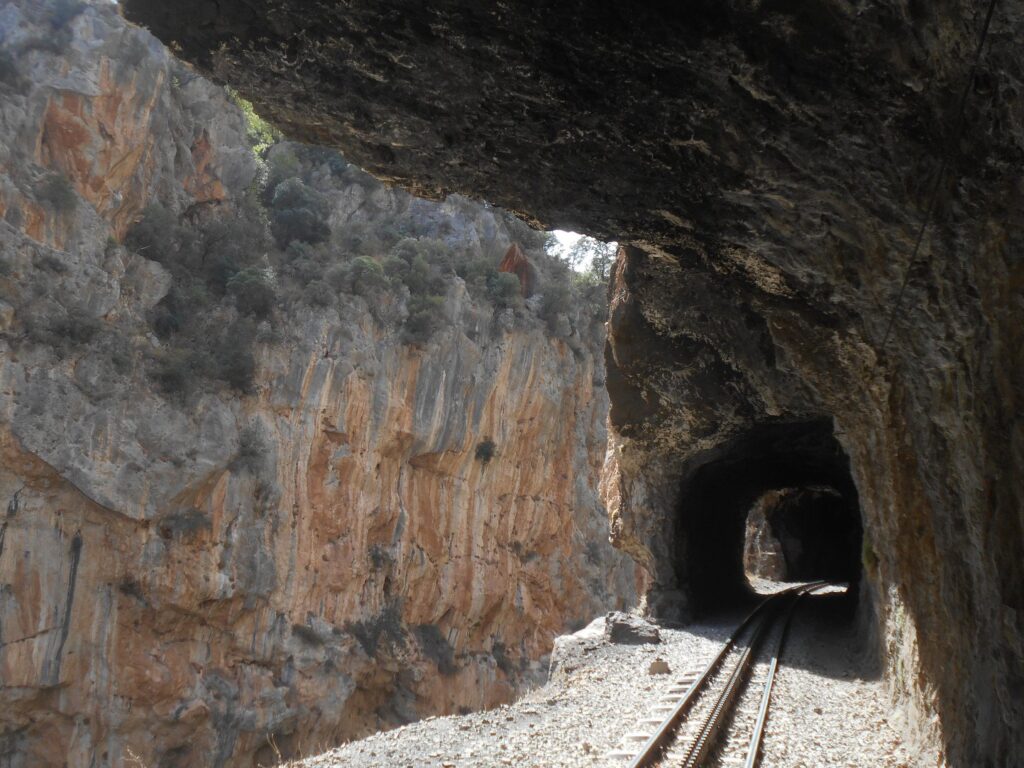
The track is often high above the river, rarely are there railings or barriers, and the drops are often sheer and considerable. Towards Niamata the valley widened and the gorge ended. At the station, we relaxed in the sunshine before the train, at a sedate pace of 40 kph (slowing to 12 kph on the ‘rack’ sections) took us back to Zachlorou in almost half an hour, allowing us ample time to enjoy the views of the walk we had enjoyed earlier.
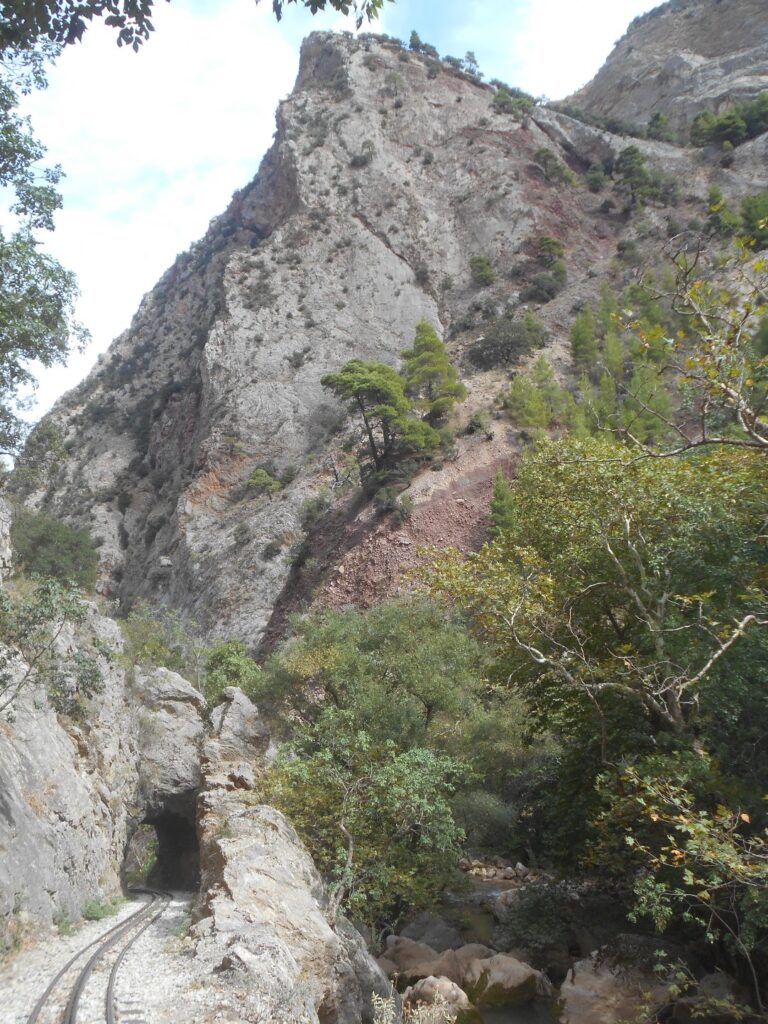
Further explorations on the Peloponnese took us to Olympia, Epidaurus, Mycaenae, Monemvasia, and to walk three sections (of eight) of the highly recommended 75km Menelon Trail in Arcadia, the first of its kind in Greece, but more of that another time ….


Recent Comments